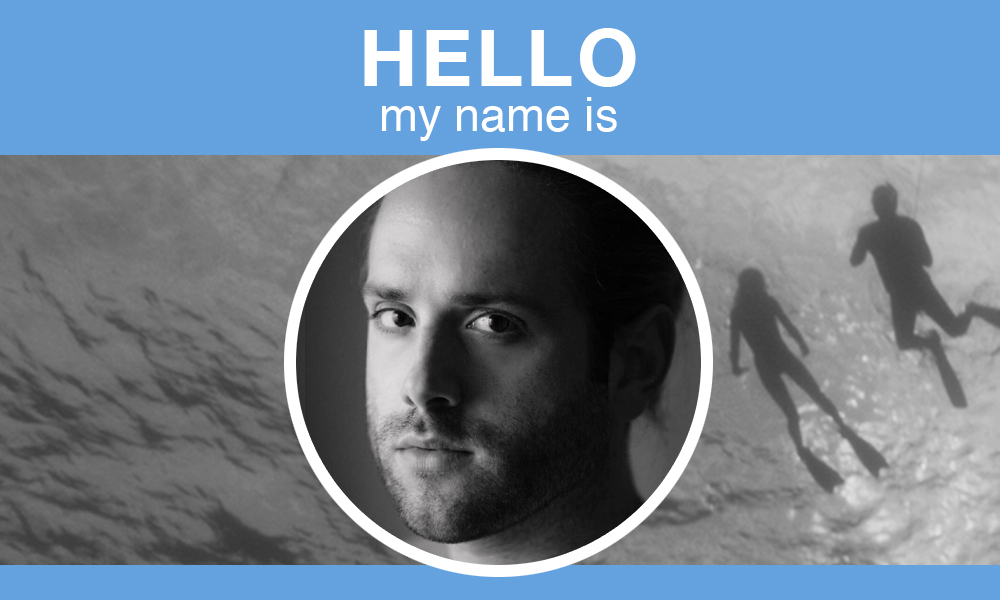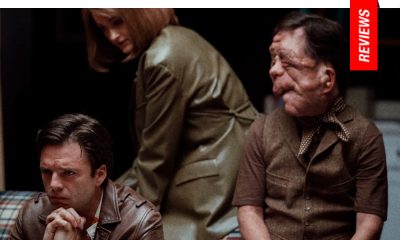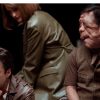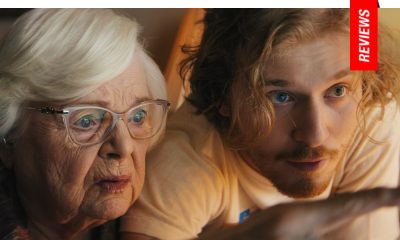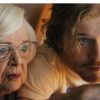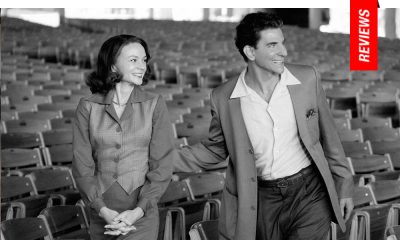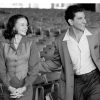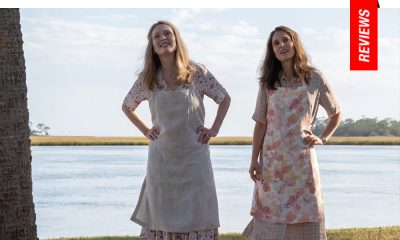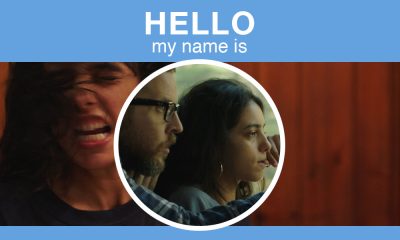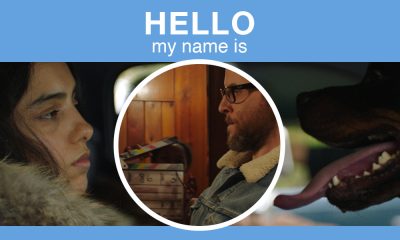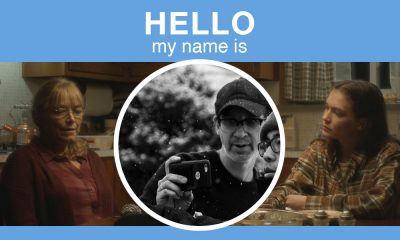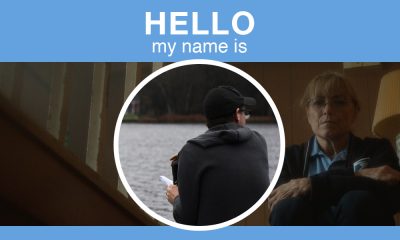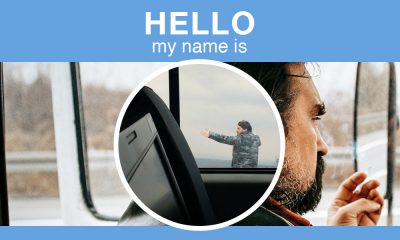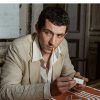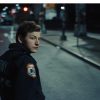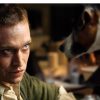IONCINEPHILE of the Month
IONCINEPHILE of the Month: Logan Sandler (Live Cargo)
IONCINEMA.com’s IONCINEPHILE of the Month feature focuses on an emerging filmmaker from the world of cinema. This month we feature American indie helmer Logan Sandler. Infused with a lyricism and poeticism that favors shades of grey matter over paradisiacal blues and greens, sometimes hope for a better life or new beginning are shipwrecked before they have a chance to set sail. Written by Sandler and Thymaya Payne, Live Cargo is Bahamian chaos theory presented in incrementally small actions and deeds.
This directorial debut had its world premiere at the Tribeca Film Festival and subsequently was shown at the AFI, Torino, Warsaw and American Film Festivals, Gunpowder & Sky Distribution opened Sandler’s Live Cargo theatrically on March 31st (NYC’s Cinema Village and L.A.’s Arena Cinelounge). Below we briefly touch upon Sandler’s background and working process. Here is our profile and make sure to check out his Top Ten Films of All Time.
Eric Lavallee: During your childhood…what films were important to you? (Perhaps the early memories you have shared among family members that are tied to specific titles?
Logan Sandler: During my younger years, I must have watched George Pal’s 1960 film The Time Machine over a hundred times at my grandparents house. I also loved Adam Sandler’s The Waterboy and Shawshank Redemption.
Lavallee: During your formative years what films and filmmaker inspired you?
Sandler: I took a European Art Cinema class my second yer in undergraduate film school, and it opened my whole world up to an array of filmmakers I was not familiar with. I fell in love with Jean Luc Godard’s Contempt and Weekend. I was blown away by Agnes Varda’s Cleo from 5 to 7. Michelangelo Antonioni’s films really struck a chord with me as well. After seeing L’Avventura and Blowup, I went online and ordered every film of his I could find. The Passenger’s penultimate shot blew me away. I watched that 7 minute shot over and over. It’s probably my favorite shot in the history of cinema.
Lavallee: At what point did you know you wanted to become a filmmaker?
Sandler: When I got to undergraduate film school I wasn’t really sure what career within film I wanted to pursue. The film and entertainment industry was pretty mysterious to me before I went to LMU. I had always loved movies and writing, so screenwriting became something I gravitated towards. I was also interested in producing as well. I got my feet wet in the professional world with internships at DC Comics’ Film Division and Wendy Finerman’s production company. As my last internship ended, I began the process of making my senior thesis, All It Will Ever Be. That’s when I truly fell in love with filmmaking and really knew in my heart that I wanted to pursue filmmaking. The film was heavily influenced by the auteurs I watched in my European Art Cinema class. Lots of long tracking shots. A very fluid movie. With that film, I was able to get into the American Film Institute’s directing program. Heading to AFI made a lot of sense for me, because it gave me the opportunity to strictly focus on the discipline of directing.
Lavallee: With a wink to L’Avventura, here your island isolation is found within a community…could you discuss how natural surroundings contributes to and informs this duality that feels embedded within your character set but in the islands as well?
Sandler: There is a strong dualism of conflicting forces at work within the setting. That’s one of the reasons why the location is so special. Island life moves at a much more languid pace than it does here in the states. This slower pace I believe allows for personal reflection. With this enhanced amount of time to reflect, the island in turn becomes a remarkably volatile space in which deep rooted issues rapidly rise to the surface. For Dree Hemingway and Lakeith Stanfield’s characters, the island is initially viewed as a place to escape and ultimately rebuild, but rapidly the island’s constricting energy brings their true disconnect to life. The “trapped” claustrophobic element of being on vacation in a such a small place showed them both how badly their love was struggling to resurface after the unimaginable tragedy they experienced together. Throughout the course of the film, the battle to overcome their sadness and anger is a difficult ugly process – at many times verbally inexpressible.
Lavallee: Themes of envy and greed are part of the fabric of the narrative, could you discuss in a broader sense how you infused the screenplay with this impulsive side of desire and the true nature of commerce?
Sandler: These themes are inherent in the film’s narrative and characters. Those specific themes grow out of the characters actions and feelings. I definitely do think there’s quite a bit of envy within the vulnerable Myron. Myron’s envy feeds into his desire of Nadine. They’re most certainly connected forces in our story. Doughboy saw this and understood he could use it to his advantage. Doughboy was easily able to then successfully manipulate the impressionable Myron into his criminal exploits by suggesting that he would become what ‘women’ want. In reality, Myron became a pawn of Doughboy’s greedy selfish desire to gain wealth. That’s what makes Myron’s character truly tragic.
Lavallee: Regardless if these are utilized as weaponry or essential tools, I’m a fan of films that introduce this malaise (here harpoon and sharpened fishery knifes have the potential of acting as a loaded gun.) As someone who spent time on the islands, could you underline this facet and its inclusion.
Sandler: The ocean is a sustaining life force for the islanders. Spears are used in spearfishing to harpoon the fish. Once the fish has been speared, one has to clean and filet the fish using a knife in order for it to be cooked. These two tools are vital to the everyday life of the ocean community in which the story took place. We had to show these processes in the film. With that being said, they most certainly do function as a foreshadowing device and are the story’s loaded gun. We see knives and spears in three different sequences of the film, before the violent climax. Seeing the potential weaponry this many times enhances the tension immensely and creates a thick air of danger. It was a subtle authentic way for the film to play up it’s thriller and noir elements. I believe that each inclusion comes about in a very organic manner that accurately portrays island life without being heavy handed.
Lavallee: Could you discuss the aesthetic and aural treatment of the underwater sequences — what were your strategies in terms of dressing and scoring the sequences?
Sandler: In terms of the visuals, I wanted to transport the audience into another realm. These underwater sequences could potentially open the film up into another dimension. I sketched out the sequences and gave those images over to my storyboard artist Josema Roig who built upon those initial drawings. Peter Zuccarini our underwater cinematographer took those storyboards and turned them into reality. The sequences were created from Nadine’s emotional point of view. Words like wonderment and awe come to mind. But there is something afoot. There’s a certain sadness to Nadine diving without her diving partner Roy that we wanted to capture. Aurally, these sentiments were echoed to our composers and sound design team. To begin, the score had to be both beautiful and melancholic. As the sequence evolves into a darker emotional space, we began to lay in some rusty electric strings. They coat the final moments of that sequence with an ominous discomforting sheen. The sound design elements were delicately placed in to subtly enclose the audience within her space and world. We never wanted the ocean and her movements to be overbearing and extreme. We felt that if the oceanic atmosphere sound was too prevalent, much of the audience’s focus would have been diverted in the wrong direction.
Lavallee: Could you describe the collaborative process you had with Thymaya Payne ….
Sandler: Our lead producer has a documentary background and he instilled a confidence in myself and the crew to be open to capturing sequences off the cuff in their real environments. A great example of this was the scene in which Dree Hemingway dances at the nightclub. Rather than try to cast thirty extras to makeup the club’s occupants, we instead opted to shoot that scene on a Saturday night while the club was really rocking. It was exhilarating and fun to shoot. Every decision came from our in the moment intuition. Nothing about directing that scene felt contrived or artificial. There was a real sense that the scene was actually alive.
Lavallee: Could you describe the collaborative process you had with Nick Ellsberg …
Sandler: Nick brought a real sense of rhythm and poetry to the film. In the editing suite, we had a rule that no moment in the film could feel contrived. Each moment had to be alive, breathing. Nick was constantly on the look for anything within the frame that could add a layer of life. Whether it was a bird who inadvertently flew across the frame or the way a coupled rain drop fell, any element that was unplanned and authentic was reviewed to see whether or not it could fit into the film. A great deal of the film is built upon the looks and gestures of the characters. In cinema, Nick and I both gravitate toward the powerful moments where nothing is said. One of the sequences I am most proud of in the film, is completely without dialogue for around five or so minutes. Maybe even longer. The sequence tracks all of the characters in different locations on the island during a tropical disturbance, leading through the boat crash to the discovery of the refugees in the ocean. Nick’s sense of poetry and seamless command of tension work together in perfect unison to create a harrowing and enigmatic progression of events.
Lavallee: Could you describe the collaborative process you had with Danielle Aufiero …
Sandler: One of the film’s casting directors came down to the Bahamas with us to help cast local actors. It was a remarkable experience. Danielle and I actually had a great deal of the island come into audition. We went door to door on a golf cart searching for potential actors. Fortunately, the island has a very small population, so it allowed us to actually audition the majority of the people living in Bimini. I wanted the film to be as authentic and realistic as possible. Therefore, I needed people from the islands to be themselves on screen. I wanted the specificity of that language and dialect to come from the real people who would become those characters. It was critical to have the local actors on board the project. Without Danielle my intentions would have never come to fruition.
Eric Lavallée is the founder, CEO, editor-in-chief, film journalist and critic at IONCINEMA.com (founded in 2000). Eric is a regular at Sundance, Cannes and TIFF. He has a BFA in Film Studies at the Mel Hoppenheim School of Cinema. In 2013 he served as a Narrative Competition Jury Member at the SXSW Film Festival. He was an associate producer on Mark Jackson's This Teacher (2018 LA Film Festival, 2018 BFI London). In 2022 he served as a New Flesh Comp for Best First Feature at the 2022 Fantasia Intl. Film Festival. Current top films for 2022 include Tár (Todd Field), All That Breathes (Shaunak Sen), Aftersun (Charlotte Wells).



